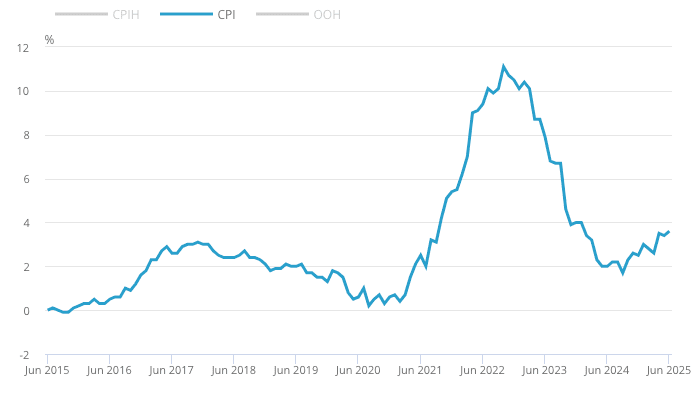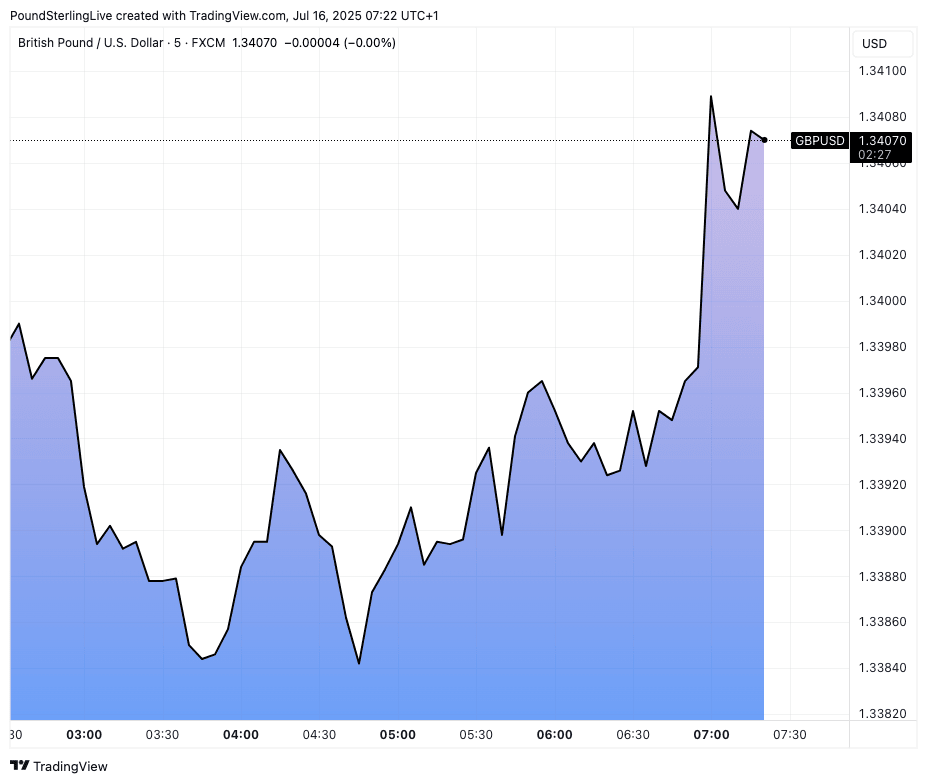
Image © Adobe Images
The Pound rises after UK inflation roundly beats expectations.
The British Pound recovered against the Euro, Dollar and other major currencies following the release of hotter-than-expected inflation data, but gains are unlikely to be sustained.
UK Consumer Price Inflation edged higher in June, with headline CPI rising to 3.6% year-on-year said the ONS, up from 3.4% in May, and beating expectations for a repeat print of 3.4%.
The annual CPI services inflation rate, which is particularly important for the Bank of England, remained unchanged at 4.7%, suggesting sticky underlying pressures in the sector. On a monthly basis, services prices rose by 0.6%, matching May’s increase.
The core CPI rate, which excludes energy, food, alcohol, and tobacco, rose to 3.7% from 3.5% in May. This represents another beat on expectations, where a repeat of 3.5% was anticipated.
CPI goods inflation accelerated to 2.4% from 2.0%, marking the highest goods inflation since October 2023.
The Pound to Euro exchange rate jumped in knee-jerk style to 1.1537 in the minutes after the release, suggesting investors saw these figures as being consistent with the Bank of England maintaining a cautious approach to cutting interest rates.
The Pound to Dollar exchange rate rose to 1.3410.
"These data are supportive of the Pound in the near term as they will constrain the Bank of England from accelerating interest rate cuts," says Russell Gous, Editor-In-Chief of TopMoneyCompare.co.uk.

UK inflation is rising again, but the Bank of England holds the view that it will fall sharply next year.
Given the stagnation in the UK economy and falling employment, the Bank of England would like to accelerate the pace at which it cuts interest rates, which it thinks will offer a buffer.
But inflation is the limiter to these ambitions: it is hard for the Bank of England to justify further rate cuts given the trends in the data we are seeing. Cutting interest rates further will risk exacerbating inflationary pressures for longer.
These inflation data therefore push back somewhat on rising bets for a further three rate cuts in 2025, which will in turn raise short-term bond yields.
This is a supportive development for the Pound as the FX market is increasingly responsive to these bond yields.

Above: GBP/USD at 5-minute intervals.
Despite an initial boost, we don't see these data as providing enduring support for the Pound, as we think the UK is facing a stagflationary outlook: rising inflation and falling growth.
This is a cocktail that is rarely attractive, particularly for foreign investors, and it should keep the Pound under pressure.
The problem for the Bank of England is that price rises are broadly spread, meaning we are not watching a 'flash in the pan' for prices.
According to the ONS, transport prices were a key contributor to the rise in headline CPI, reflecting smaller declines in fuel prices and a sharp increase in airfares. Clothing and footwear prices also rebounded, posting a 0.5% annual increase after falling 0.3% the previous month.
Meanwhile, housing and household services inflation eased slightly to 7.5%, down from 7.7% in May, providing a partial offset to the overall price pressures.
"The surprising strength of the inflation figures adds additional issues to the UK’s mounting economic woes. All eyes will turn to the Bank of England who have indicated they are willing to cut rates given the cooling in the jobs market but are unlikely to be able to justify a cut when inflation has started to run hot once again," says Isaac Stell, Investment Manager at Wealth Club.
